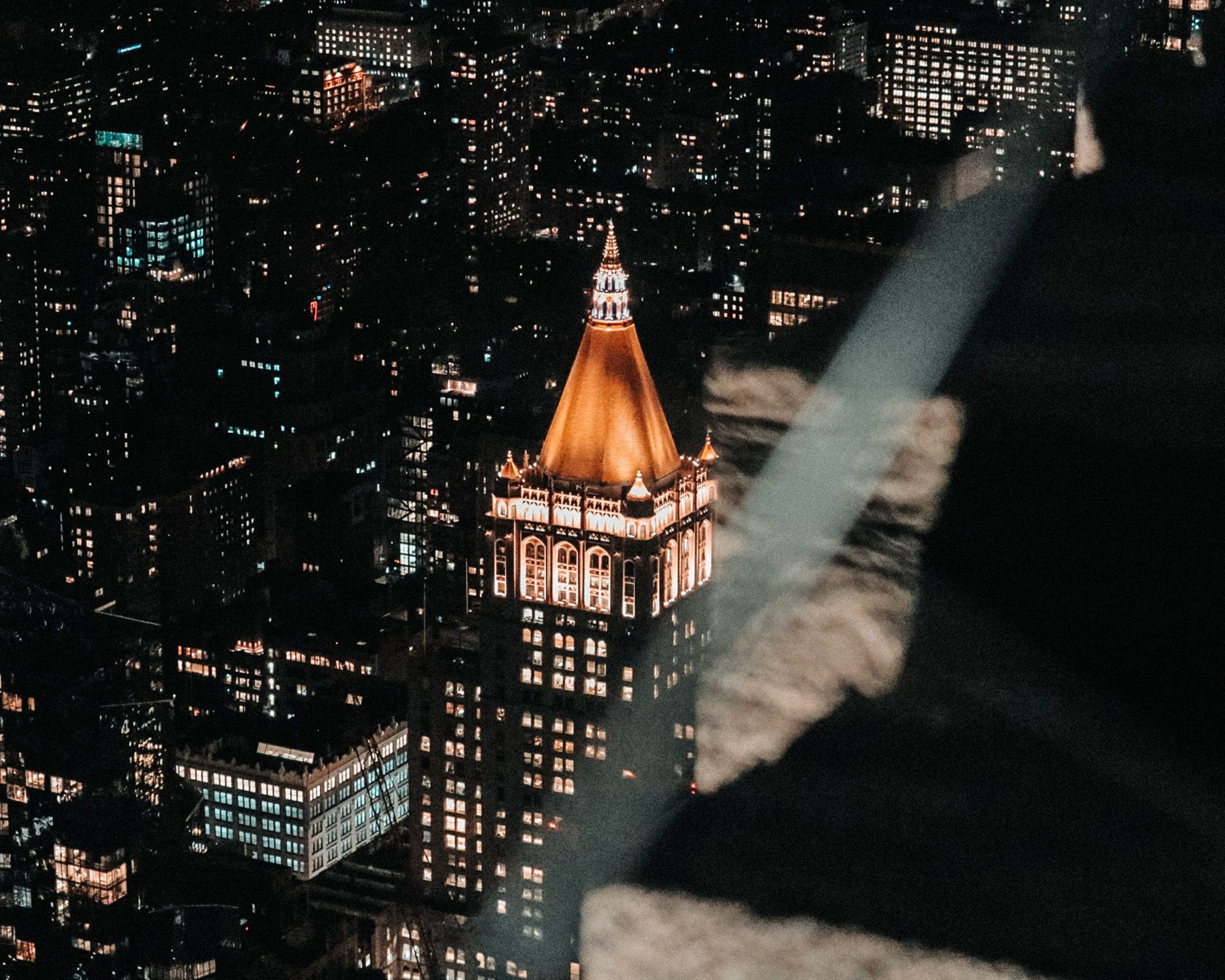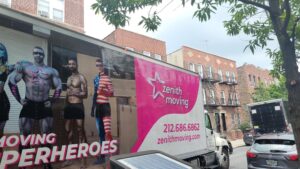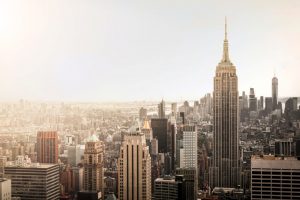Spatial Coordinates: Manhattan Geographically
Your guide to moving to Manhattan enables navigating the complex process of relocation. It helps the customer:
- obtain information;
- make decisions;
- relax;
- budget;
- boost trust.
The departure point in wrestling important information from the available overload is situating the location in space. Manhattan is a New York City borough. In addition to Manhattan, there is Brooklyn, Queens, the Bronx, and Staten Island. The three main parts can be said to be Lower (Downtown), Midtown, and Upper Manhattan. A more detailed classification includes subdivisions. Some of them are Upper East, Upper West, Lower East, Lower West Side, Harlem, and Financial District.
The particular neighborhoods within these are the spots of history. It lingers over the years and is suspended over the space as it is now. The East Village — once a home of immigrants, subcultures, and revolutionary music — offers entertainment, but also educational institutions. The West Village with the Stone Wall history of human rights features art, cafes, restaurants, and luxury housing. The Financial District, boasting the New York Stock Exchange, welcomes the professionals gravitating toward the area of finance capital. Midtown is mainly business based, strongly leaning toward shopping and tourism. Harlem speaks of the history of music, art, the civil rights movement, and the struggle for equality and social justice. Chelsea is the arts hub with myriad galleries and stunning performances. Gentrified Soho, Noho, Little Italy, Meatpacking District, and the bohemian Greenwich Village bring art, education, and corporations to Manhattan. Chinatown is still the haven of authentic flavors, spices, and good bites. The Upper West Side is the pride of Manhattan’s thriving community. It is situated amidst the combination of stunning architecture, green areas, educational and healthcare facilities. The Hudson River, Riverside Park, Central Park, and other sources of health and leisure are there.
In the midst of Manhattan is the huge green area called Central Park. The lungs of the city invite the oxygen thirsty to keep fit and sustain the freshness of thought. It inspires and rejuvenates. Spots of relevance include:
- Great Lawn,
- Conservatory Water,
- Ramble,
- Lake,
- the Reservoir,
- Sheep Meadow.
Additionally, central Park boasts:
- Loeb Boathouse,
- Belvedere Castle,
- Wollman Rink,
- Zoo,
- the Delacorte Theater.
The Upper East Side is an upscale gem of Manhattan. On the opposite side of Central Park, it stretches to the East River. Its proverbially luxury apartments are one of the things it is praised for. It also offers a unique neighborhoody vibe, museums, and shopping venues. Each of the neighborhoods is historically and culturally vibrant and inspiring. Manhattan’s squares are sites of interest. Times Square, Union Square, Washington Square, and Madison Square Park is where people get together, relax, and enjoy street events. Some of the Manhattan landmarks include Museum Mile, Penn Station, and Port Authority Bus Terminal. In addition, there is Rockefeller Center, Radio City Music Hall, World Trade Center, and the United Nations headquarters.
Manhattan is an island. It is bounded by rivers. They are The Hudson, East, and Harlem Rivers, which is a tidal strait between the Hudson and the East Rivers. Manhattan is connected to other boroughs by bridges. The historic Brooklyn Bridge, Williamsburg, and Manhattan bridges connect Manhattan with Brooklyn and Queens. They are located to the south and east of Manhattan. The area has access to the Financial District and the Lower East Side over the East River. Queensboro Bridge crosses the East River, thereby connecting Manhattan and Queens. The famed Triborough Bridge is, actually, a complex of bridges and viaducts linking Manhattan with Queens and the Bronx. Particularly, it links Harlem, Astoria, and the South Bronx, as the nearest points in the respective boroughs.
Orientation: Key Pillars of the Sense of Direction Moving, Going Places: Traffic
Your guide to moving to Manhattan introduces you to the heart of the city that never sleeps. The traffic in Manhattan justifies this reputation. It is always dynamic, boisterous, buzzing, and steaming. Surely, during the weekdays, it is more intense than at some moments at the weekend. During the rush hours, it is very intense. There are periods when the traffic is a bit slower, however. In the summer when many people are away and schools are closed, it might not be as hectic as in the peaks. Your guide to moving to Manhattan reminds you that it is also the time when tourists flock from all around the world. Nowadays, the influx of tourists is worryingly lower than in the prepandemic era. It is another threatening factor to the economy of the city at the moment. Yet, it is being resumed gradually. One should bear in mind that even in this sedentary season, the city is vivacious and inviting.
The parts of the city are connected via the network of streets, roads, expressways, viaducts, bridges, underground railroads, overground railroads. Many people drive. The number of cars in the streets is mind-boggling. Yet, there is also a good public transportation system enabled by The Metropolitan Transportation Authority (MTA). Buses operate regularly. In addition to the subway, they make it easier for people to reach their desired destinations. Ferries are also available. The pandemic circumstances have massively affected these public services. Staff shortages, safety issues, and health hazard made the use of the public transport, notably the subway, somewhat problematic. However, this is being taken care of as we are moving out of the most critical COVID pandemic stricken period.
Dwelling and Visiting: People and Housing in Manhattan
Your guide to moving to Manhattan presents one of the most astonishing facts in relation to this urban miracle. It hosts a plethora of ethnicities, religions, genders, and skin colors. The density of Manhattan is higher than in many cities in the US. In comparison to the five boroughs, it has the third-largest population. The cost of living is high. So are the rent and the real estate prices. The price of temporary accommodation is also considerable. Per diem expenses for the visitors vary and depend on their needs and lifestyles. Generally, however, they cannot be insignificant.
Moving to Manhattan Rain or Shine: The Weather
Manhattan has both a humid subtropical and a humid continental climates. This means that summers are hot and humid. Due to the amount of concrete and glass, as well as the density of buildings, the effect is intense. Temperature can be a little higher than in the other parts of New York, particularly in the periods of heatwaves. There are rainstorms, thunderstorms, tropical storms. There can also be tornados and hurricanes. Winters can be very cold and very long. Snowstorms are not unusual. Spring can be bright and sunny, but can bring a lot of humidity, as well. The fall can be warm and beautiful with foliage color change and the pleasant vibes occupying the city. Both can be difficult to predict. Oscillations from chilly to warm temperature, and low to high humidity are not unusual.
Stay Safe: Remain Alert, Trust the Law
Safety is currently the focus of the public concern. Historically speaking, Manhattan went from the period of high crime rate in the 1960s and the 1970s to the stability which was consolidated in the 1990s. However, the COVID pandemic slightly destabilized this picture. Many people became jobless and the number of homeless people increased. The crime rate increased, as well. The streets were not as safe as they had been. Subway was where the crime occurred, among other places. There has been some race based crime that wasn’t nearly as prominent before the pandemic. One can trust, however, that good policy, a stable legal system, and moral awareness of people will contribute to the stability of this area in the nearest future. One can hope to actually see some of its aspects being managed quite successfully at the moment.
Spatially and Otherwise: Manhattan’s “Impalpable” Coordinates Since the Olden Days: The Gigantic Elf Called Manhattan
This island is everything but insular. It prides itself on being the cultural, media, financial, and entertainment capital of the world. Undoubtedly, it is one of the global centers of political power, as well. Its history is the testimony of struggle and unity, trouble and prosperity, suffering and joy. Both its past and the present bear witness to the coexistence of diverse ethnicities, races, religions, genders, and world views. People of all walks of life contribute on a daily basis to the vibrancy and allure of this might gem. It runs on the energy and means perpetually generated. Some of the world finest instances of art, business, education, entertainment, and science dwell here.
Its stores are amazing. From clothes to technology, they offer the selection of the most exquisite products. However, given the economically diversified structure of the demographics, not all of them are upscale. There are moderate, affordable, fast fashion sources that can feed the hunger of those in need. Its restaurants are stunning. They feature refined cuisines and a unique gastronomic pleasure. Gastronomic explorers can meet and discover instances of tastes from all around the world. There are hip venues offering the finest liquors. In addition to bars, there are also bakeries and cafes. Delicious pastry, ice cream, ice, rice pudding, cakes, and cookies crown the experience. The enchantment by the magic of flavors and nice atmosphere is indeed constitutive of Manhattan’s food and drink experience. However, one should not be misled. Not all the venues are high-end, fancy places. There are fast food venues, diners, nondescript small restaurants, smelly bars, and random cafes. Yet, they all contribute to the character of Manhattan as a whole.
Clearly, the COVID pandemic has brought changes in all the spheres of the everyday of the people worldwide. This includes Manhattan. It also concerns the way people are allowed to enjoy their food and drinks. Specifically, the venues mostly offer outdoor service. A vaccine proof may enable access to some indoor services. Manhattanites are known to handle crises well. This one is no exception. They adopted the attitude that helps them exercise resilience, patience, solidarity, and reason. They can abide by the rules. It might not be easy, but it’s worth it. Yet, there are also prospects for a brighter experience in Manhattan’s wine and dine spots. The months of spring and summer will allow us to enjoy outdoor activities in their fully-fledged form. Warm weather is coming soon to melt the unease and recuperate the joy-starved denizens and visitors.
Your Guide in the Realm of Ideas: Education, Art, and Fun in Manhattan
In addition to fitness, fashion, food, and drinks, Manhattan offers appealing bookstores and libraries. Barnes and Noble, Book Culture, Shakespeare & Co., and Strand constitute the book hub. Numerous branches of the New York Public Library offer books to check out, programs to attend, and art to enjoy. Books are the pods from which knowledge disseminate. Knowledge dwells at schools and universities, as well. There are a lot of prestigious private and excellent public schools across Manhattan. Some of the most prominent institutions of higher education are Columbia University, NYU, CUNY, The New School, and Juilliard School. One should not forget Cooper Union, New York Institute of Technology, Berkeley College, Pace, Marymount Manhattan, Yeshiva, and Fordham Universities.
Hard work goes hand in hand with partying hard. There are numberless places and ways to enjoy the best entertainment in the world. From Broadway shows to Off Off Broadway production, theater reigns supreme. Music venues—from Madison Square Garden, via the Smalls, to low key spots featuring brilliant performances are available. Bars, cafes, restaurants, and clubs abound. Mask up, show your proof of vaccination, and enjoy!
Your Guide to Moving to Manhattan: How to Navigate the Move
Your guide to moving to Manhattan is a trust booster. It encourages you to believe that there are moving companies that take the question of responsibility seriously. They meet the requirements that ensure an efficient, client-friendly, and well-organized move. You need a skilled, well-equipped, reliable moving company to enable the smooth moving process, safe relocation of objects, and happy people. The company that can offer an expert service also brings about a stress free moving process. The whole endeavor becomes easily manageable and soothing, and makes one feel at home in Manhattan. For one, such a company helps you keep your daily activities and schedules intact. The move does not affect work, attending classes, running errands, and other related duties if the choice of the company is right.
A team of professional movers helps you organize you activities, manage time and budget. They carefully, responsibly, and safely pack, disassemble, wrap, and relocate. They also unload the trucks, unwrap, unpack, and reassemble the objects. Fragile objects, technology, and antiques are not under a threat in the hands of professional movers. Should one need short-term and/or long-term storage facilities, they will have them available. The full moving service they offer includes a moving quote, top-notch equipment, and competitive rates. They can handle residential and commercial moves. Distance-wise, local or long-distance moves are on the menu, as well. White gloves service characterizes such a company, since it relieves the customer of worries, physical strain, and distress. What looked troubling is a seamless enterprise now.
The right NYC moving company will also know the Manhattan tricks. Some of them may include strict apartment rules, a shortage of elevators, and scarce street parking. Your guide to moving to Manhattan helps you make the choice that will alleviate the hardships of the move. We set high standards. We also meet them. It’s the promise we keep.




